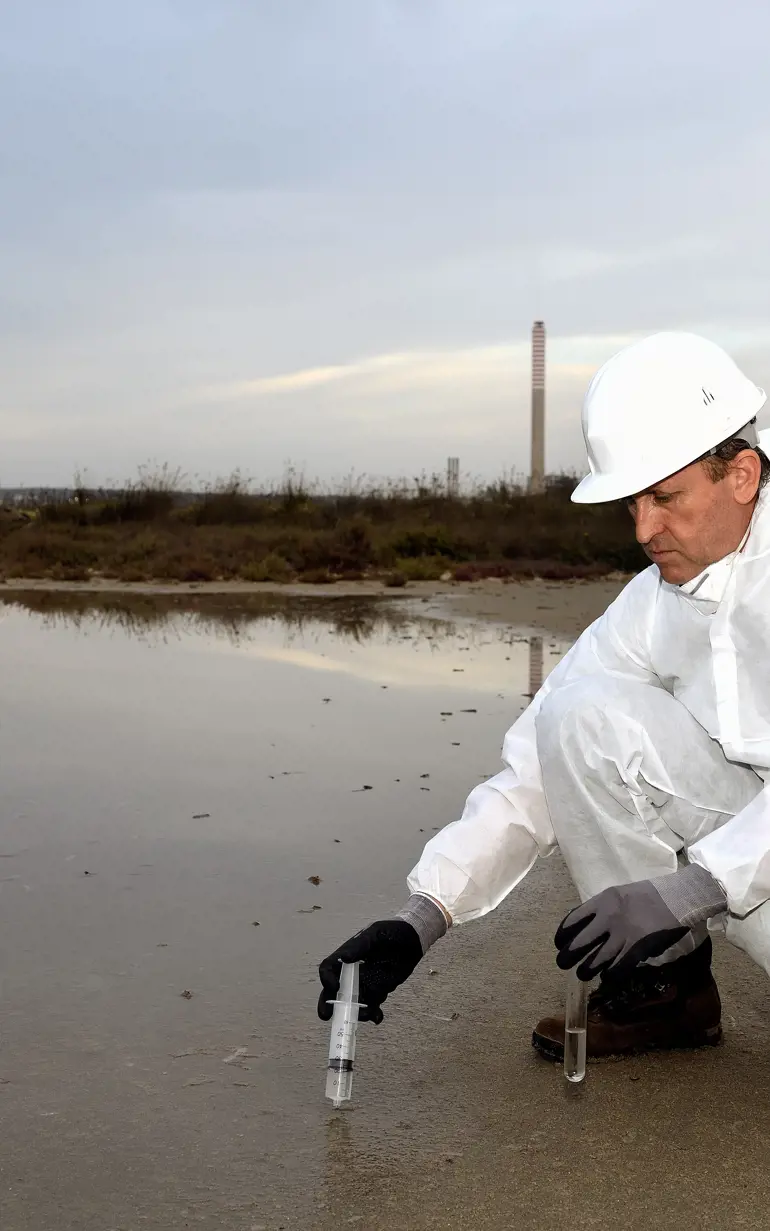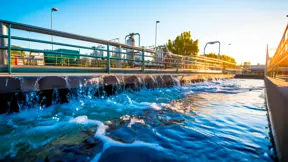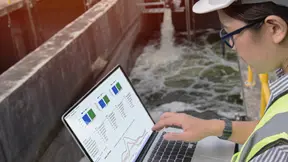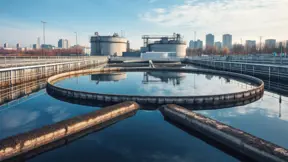
Tracing sources to PFAS in wastewater treatment plants
New DHI report supports solutions to minimise PFAS and other harmful substances from spreading to water environments
PFAS, or per- and polyfluoroalkyl substances, are widely used, long-lasting chemicals. They are also called forever chemicals because they break down very slowly over time. PFAS have been found in water, air, fish and soil at locations across the globe. In recent years, scientific studies have shown that PFAS is linked to harmful effects on both the environment and human health. Consequently, there is increasing public and political concern about the spread of PFAS and other environmentally harmful substances, not least into groundwater and water environments.
Denmark’s largest wastewater utility BIOFOS asked DHI to trace the sources of PFAS and other environmentally harmful substances in the catchment area of 15 municipalities in the Greater Copenhagen area together with the 15 catchment municipalities. The investigation found that two waste management companies were the sources behind 40% of the PFOS (perfluorooctane sulfonic acid, part of PFAS) found at one wastewater treatment plant.
Challenge
There are thousands of PFAS chemicals, and they are ubiquitous in consumer, commercial and industrial products. As they break down very slowly, these so-called forever chemicals accumulate in the environment. In recent years, scientific studies have shown that PFAS is linked to harmful effects on both the environment and human health. Consequently, there is increasing public and political concern about the spread of PFAS and other environmentally harmful substances, not least into groundwater and water environments, and wastewater utilities are faced with strict environmental requirements for discharges of PFOS and PFAS. However, it can be challenging to know where to start and how to limit the spread of these harmful substances most efficiently.
Wastewater utilities are actively investigating how to ensure that PFAS is not disseminated to water environments through their treatment plants, but it is both complex and costly to remove PFAS at the wastewater treatment plants in diluted streams. It is therefore more cost-efficient and effective to minimise the spread of PFAS directly at the source in the concentrated stream.
BIOFOS had found that the concentration of 15 environmentally harmful substances was higher than what is allowed in the European and Danish environmental quality standards in the outflow from the utility’s three wastewater treatment plants in the region. In 2020, BIOFOS consequently wanted to map their existing knowledge and data on these environmentally harmful substances, which included PFAS. The procedure was a so-called dry source tracing in the catchment municipalities. The procedure is called dry, because it consists of collecting existing data, in this case information from the 15 catchment municipalities on companies in the region and control data. The conclusion was that there was a lack of more in-depth knowledge about several of the environmentally harmful substances identified in the wastewater, including PFAS and tin.
Solution
BIOFOS therefore decided to initiate a more comprehensive source tracing investigation with the support from DHI’s experts. This time, the procedure was wet source tracing in which samples are collected. The overall purpose of the investigation was to gather more information about the sources of the environmentally harmful substances as an initial step in reducing the discharge of these substances into the wastewater.
Samples were taken from 30 companies in nine selected industries in the catchment of BIOFOS’ three wastewater treatment plants. The selected industries were: waste deposit sites, waste management companies, asphalt production, industrial laundry, laboratories, car wash facilities, train/bus/lorry wash facilities, fire drill sites, contaminated groundwater remediation and construction dewatering.
For the sampling, DHI experts used passive samplers, SorbiCeller™. This method allows for a time and cost-efficient sampling over long time periods, which results in more longitudinally representative values than what is possible with the conventional short-term measurements.
The following analysis parameters were included in the source tracing programme:
- Six metals: lead, cobalt, copper, mercury, tin, zinc
- Bisphenol A
- DEHP
- 15 PAH: Naphthalen, Acenaphthen, Acenaphthylen, Fluoren, Phenanthren, Anthracen, Fluoranthen, Pyren, Benzo(a)anthracen, Chrysen/Triphenylen, Benzo(b+j+k)fluoranthene, Benzo(a)pyren, Indeno(1,2,3-cd)pyren, Dibenz(a,h)anthracen, Benzo(g,h,i)perylen
- 12 PFAS: PFBA, PFBS, PFPeA, PFHxA, PFHxS, PFHpA, PFOA, PFOS, 6:2 FTS, PFOSA, PFNA, PFDA
The investigation found that two waste management companies were the sources of about 40% of the PFOS discharged into one of BIOFOS’ wastewater treatment plants. Waste management companies are in general the largest sources of PFAS and a number of other environmentally harmful substances in the three wastewater treatment plants in the Greater Copenhagen Region.
Results
The investigation launched by BIOFOS and the 15 catchment municipalities has provided these municipalities with a tool for identifying the major sources of PFAS contamination in their municipality. They now also have a data-based foundation for dialogues with the waste management companies.
Because PFAS is a so-called forever chemical and widely used in consumer products, waste management sites will likely continue to be major sources of PFAS dissemination in the future, irrespective of any ban on future use of the chemical. The sooner the sources of PFAS are identified, the sooner action can be taken to limit the spread of these environmentally harmful substances. At least one of the waste deposit sites in question is currently looking into testing PFAS purification methods.
- Identification of major sources of PFAS discharge to wastewater treatment plants
- Basis for dialogue with waste management companies on reducing discharge of PFAS and other environmentally harmful substances
- Improved basis for stronger protection of water environments in the long term
Client:
BIOFOS
Location:
Denmark
Related SDGs:
SDG 6: Ensure availability and sustainable management of water and sanitation for all
‘With our new knowledge of the sources of PFAS contamination, which we could not have gained without the knowledge and support of DHI’s experts, we and the municipalities now have a strong basis for dialogue with the companies responsible for the majority of the contamination. By working together, we can find solutions to minimise PFAS and other environmentally harmful substances from spreading to our water environments and even from reaching our wastewater treatment plants in the first place.’
Dines Thornberg, Head of Environment and Development
BIOFOS
About our client
BIOFOS is Denmark’s largest wastewater utility and treats wastewater for companies and institutions as well as 1.2 million citizens in the Greater Copenhagen Area. BIOFOS operates three wastewater treatment plants.
You may also like
How can we help?
With our global network of offices, we make sure you get the right answers to your local needs. Tell us about your water challenges and we will get back to you.





